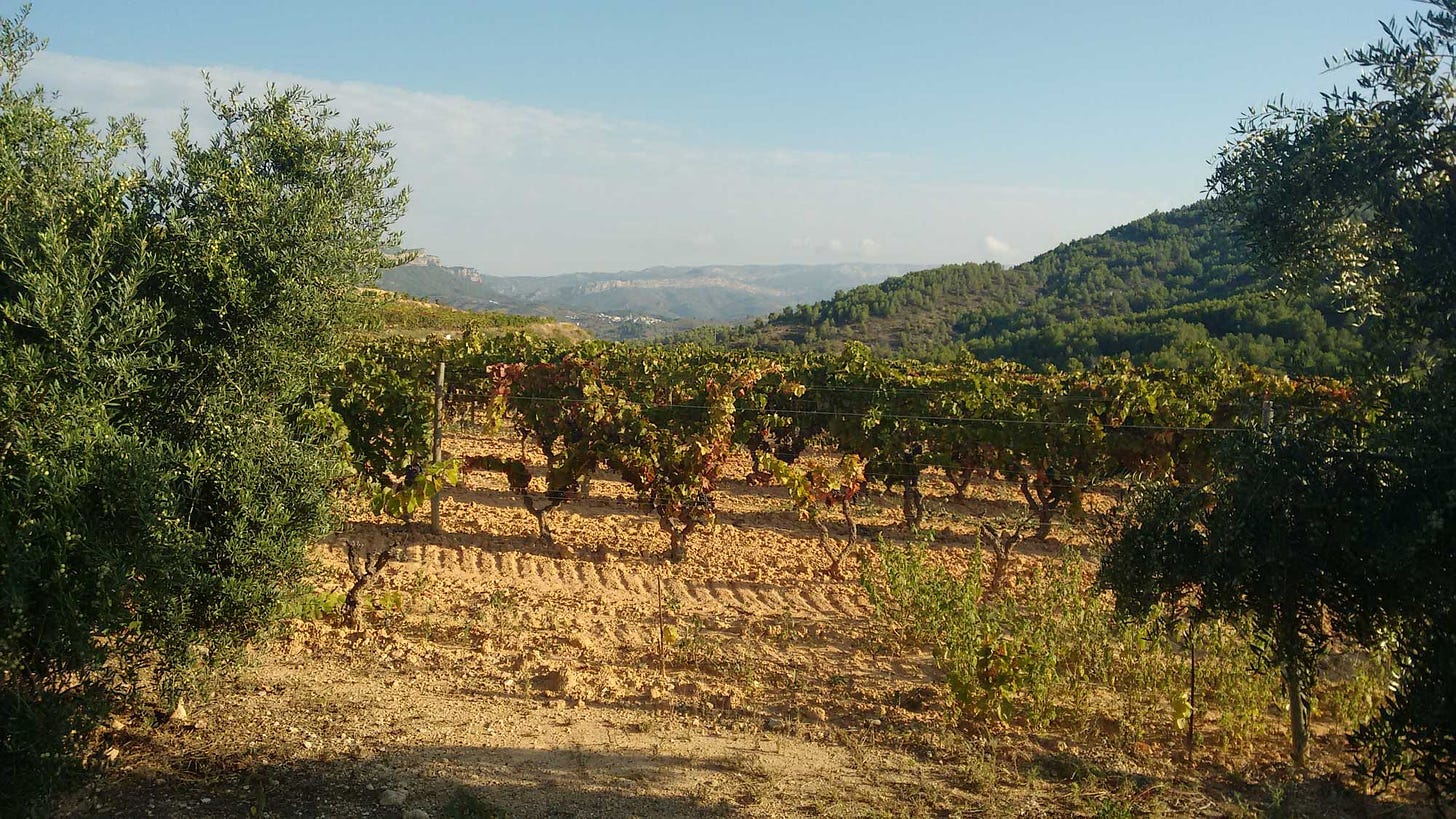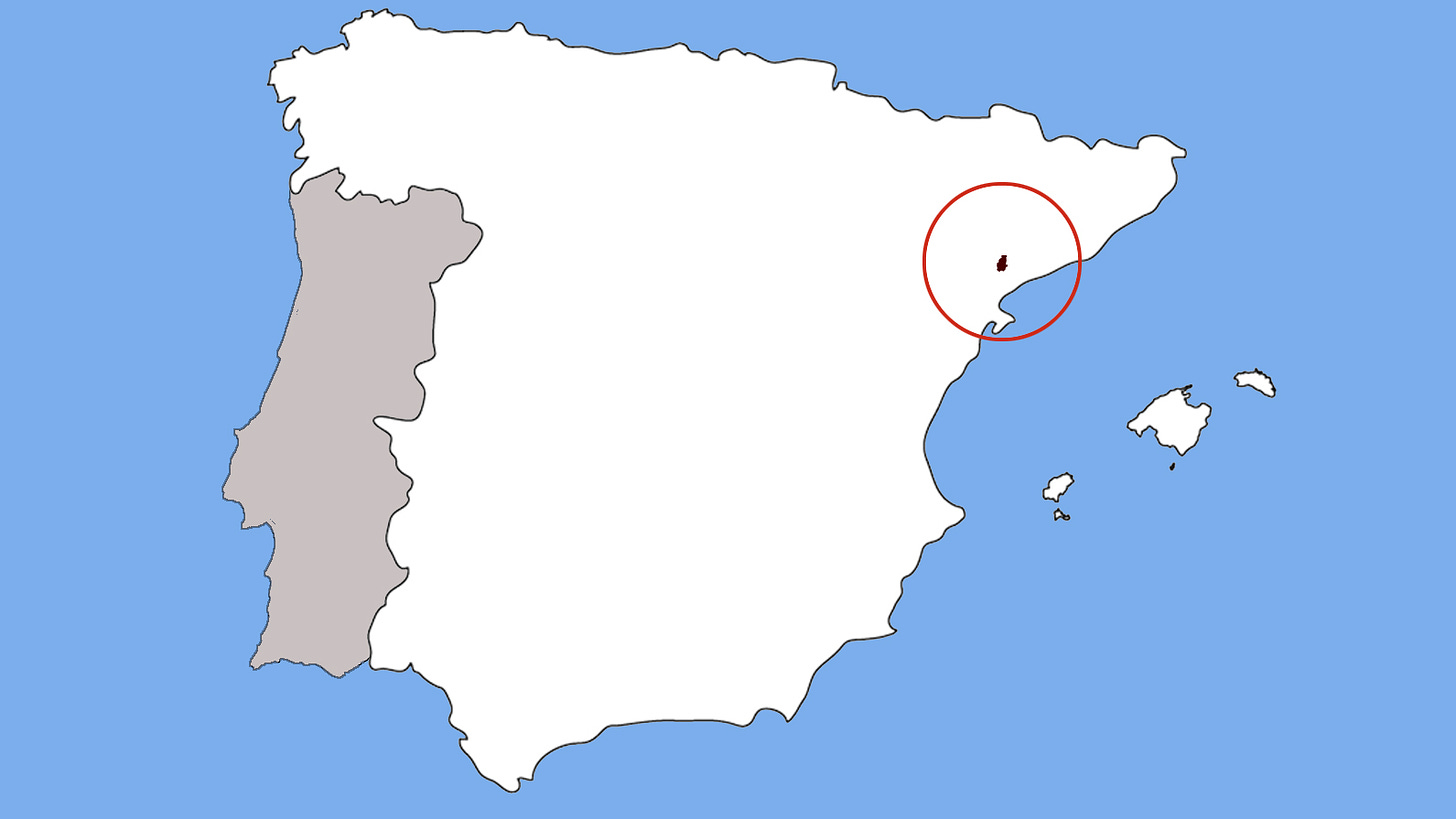DOQ Priorat
This article was originally published on our old website, Simply Spanish Wine.
Key Points
Grape varieties: Garnacha, Cariñena, Garnacha Blanca, Macabeo
Hectares planted: 2,164 Hectares
Grape growers: 513
Wineries: 114
About Priorat
Priorat is one of the 10 Denominaciones de Origen in Catalunya and, along with DOCa Rioja, it’s one of the two wine-growing regions in Spain with "DO+" status. Its official title is actually (in Catalan) Denominació d’Origen Qualificada (DOQ) which means that, like Rioja, the rules are that little bit stricter, and include requirements for all bottled wines to have been bottled in wineries within the region, for each winery to clearly map out the vineyards used to make DOCa/DOQ wines, and tighter controls on quality from one vintage to another.
But it’s not all rules and regulations. Priorat also has a wonderful winemaking history that stretches back centuries to - you’ve guessed it! – the Romans. But our story really begins at the tail-end of the 12th century when Carthusian monks built the Cartoixa Scala Dei (stairway to heaven) monastery on a site where locals claimed they saw a ladder which the angels used to go up to heaven and back. The name Priorat refers to the "lands of the Priory", and the monks planted vines and built the wineries which really set the region on the winemaking course it continues to this day.
Like many regions in Spain, phylloxera and the Civil War stymied growth for many decades until the early 1980s when a far-sighted group of young winemakers led by people like René Barbier and Alvaro Palacios (whose L'Hermita is one of Spain’s most expensive wines) saw huge potential in the breathtakingly beautiful landscape of DOQ Priorat. Thanks to their vision and efforts, Priorat helped kickstart a wider Spanish wine revival that continues to this day.
The terrain of Priorat
Priorat can be defined by its mountain viticulture. Like Ribeira Sacra in Galicia, the enchanting mountains, ridges, hillsides and costers ("steep slopes" in the Catalan language) of Priorat make for a pretty tortuous geography, resisting mechanised farming methods and requiring winegrowers to farm small plots (the whole DOQ only covers some 2,000 hectares) with famously low yields, arrange their vineyards in terraces to facilitate access and, in some cases, use traditional methods like horse or donkey to till the land between the vines.
Another key aspect that sets Priorat apart from other wine-growing regions is the famous crumbling black slate and quartz soil known in Catalan as llicorella. Nutrient poor, the grapes are forced to dig deep for sustenance, which helps give Priorat wines a distinctive mineral concentration that has become their hallmark.
The climate of Priorat
The terraced vineyards of Priorat are between 200 and 650 metres above sea level and only 50 km inland from the Mediterranean. Summers tend to be hot and very dry, ideal for ripening the Garnacha and Samsó (Carignan or Cariñena in Spanish) grapes. Despite the proximity to the Mediterranean, the local climate can have some continental elements with marked temperature differences between the valleys and higher areas.
The grapes of Priorat
Old vine Garnacha and Samsó are the stars here, traditionally producing quite rich, powerful red wines with notes of liquorice, tar, and black cherries. But as climate change affects winegrowers everywhere, efforts are being made to produce lighter styles with more subtle use of oak ageing, for example.
In summary
For the traveller, Priorat is a magical place to explore and wine enthusiasts have been waxing lyrical over the region’s (generally quite powerful) full-bodied red wines for many years now. It’s also a good base to explore new, more locally-specific ways of labelling wine as the Regulatory Council has introduced some new categories which allow wineries to label their wines in a more precise, detailed way to specify provenance, more akin to the system in place in Burgundy in France. These new classifications include Vi de Vila (Village Wine), Vi de Paratge (Single Vineyard wine), Vinya Classificada (an equivalent to France’s Premier Cru label), and Gran Vinya Classificada (Gran Cru).







